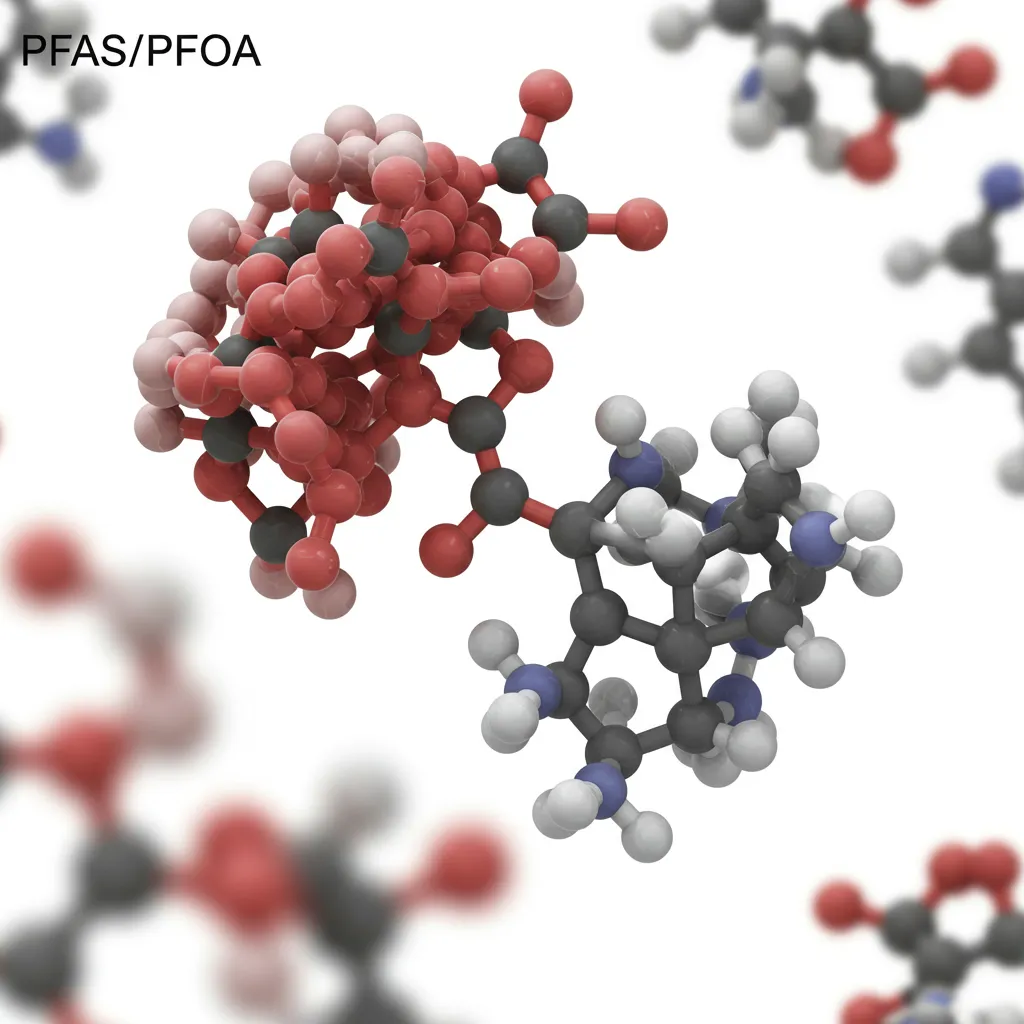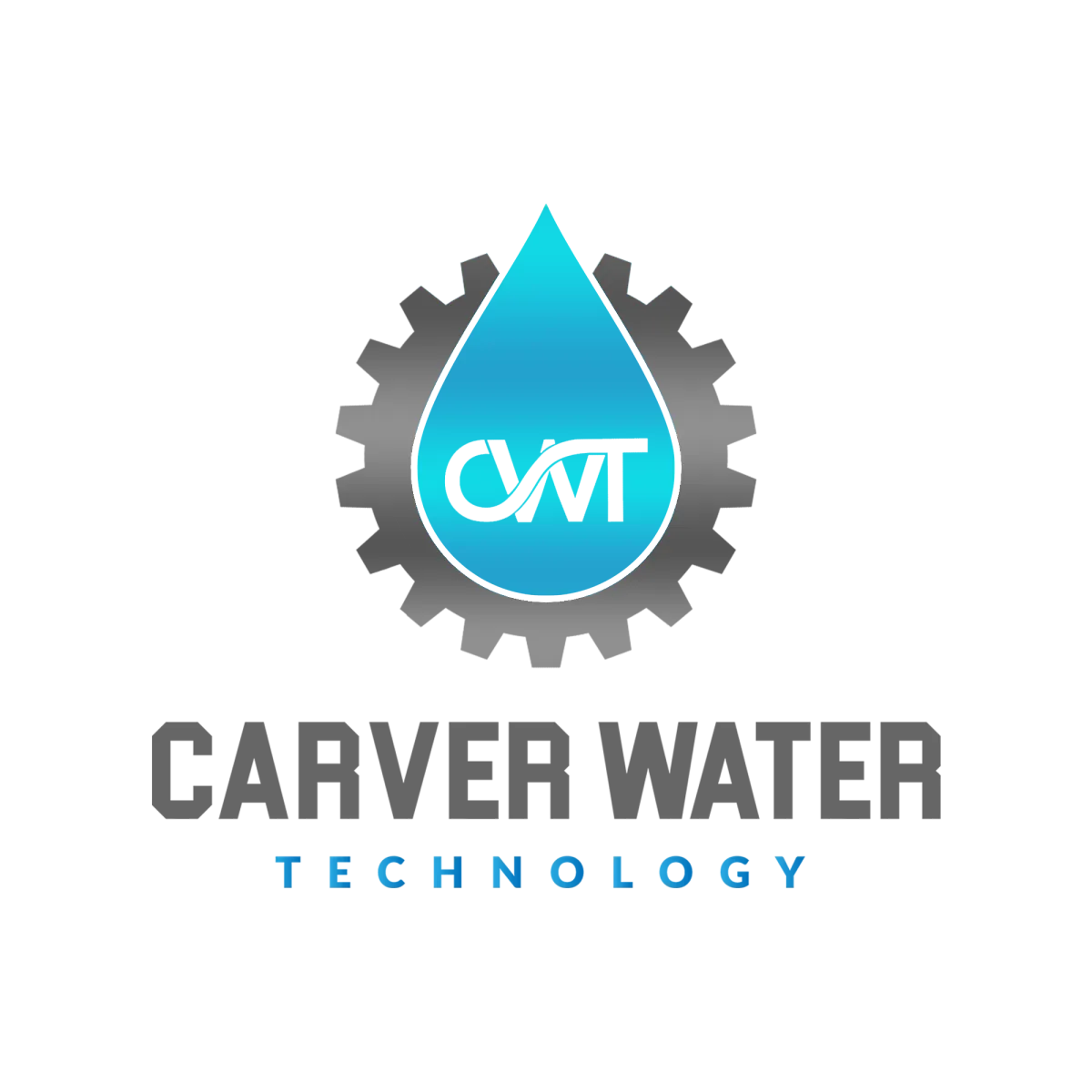
PFAS Contamination Crisis: Florida's Leading Water Treatment Solutions for Forever Chemicals Removal
What Are PFAS? A Technical Overview
Per- and poly-fluoroalkyl substances (PFAS) represent a class of over 4,700 synthetic chemicals characterized by their extremely stable carbon-fluorine bonds. First developed in the 1940s, these compounds feature a unique molecular structure where fluorine atoms are bonded to a carbon chain, creating one of the strongest chemical bonds known to science.
The most common PFAS compounds include:
PFOA (Perfluorooctanoic Acid) - 8-carbon chain with carboxylic acid head group
PFOS (Perfluorooctanesulfonic Acid) - 8-carbon chain with sulfonic acid head group
PFNA (Perfluorononanoic Acid) - 9-carbon chain compound
PFHxS (Perfluorohexanesulfonic Acid) - 6-carbon chain sulfonic acid
The carbon-fluorine bond strength (approximately 116 kcal/mol) makes these molecules extremely resistant to heat, water, oil, and chemical degradation. This stability, while useful for industrial applications, creates persistent environmental contamination that doesn't break down through natural processes.
Learn more about PFAS chemistry from the EPA: EPA PFAS Information
The Pervasive Nature of PFAS Contamination
PFAS contamination has become ubiquitous in the global environment due to decades of industrial use and discharge. Environmental monitoring reveals PFAS presence in:
Geographic Distribution
Groundwater systems - Contamination plumes extending miles from source points
Surface water bodies - Rivers, lakes, and coastal waters affected by industrial discharge
Drinking water supplies - Public water systems serving millions of Americans
Atmospheric transport - Long-range transport leading to contamination in remote areas
Contamination Sources
Industrial manufacturing facilities have historically discharged PFAS through:
Direct wastewater discharge to water treatment plants and receiving waters
Air emissions from manufacturing processes and waste incineration
Landfill leachate containing PFAS from disposed products
Biosolids application spreading contaminated sewage sludge on agricultural land
Contamination Scale
Recent monitoring data reveals the extensive nature of PFAS contamination:
Over 1,400 industrial and commercial sites with confirmed contamination
More than 140 Department of Defense installations affected
Thousands of public water systems detecting PFAS above health advisory levels
Contamination documented in every U.S. state and territory
Review current EPA PFAS monitoring data: EPA PFAS Regulatory Information
Why PFAS Contamination Is a Critical Issue
Environmental Persistence
The extreme stability of carbon-fluorine bonds means PFAS compounds don't degrade through natural environmental processes. Unlike most organic pollutants that break down over months or years, PFAS persist indefinitely in the environment, earning the designation "forever chemicals."
This persistence creates several critical problems:
Accumulative contamination - Concentrations increase over time rather than decreasing
Irreversible environmental damage - No natural remediation pathway exists
Intergenerational impact - Contamination affects future generations
Expanding contamination zones - Groundwater plumes continue spreading
Bioaccumulation and Biomagnification
PFAS compounds accumulate in living organisms and concentrate up the food chain. Key characteristics include:
Protein binding - PFAS bind to serum proteins and remain in bloodstream
Tissue accumulation - Concentrated in liver, kidney, and other organs
Long elimination half-lives - Years required to reduce body burden
Food chain magnification - Higher concentrations at upper trophic levels
Human Health Implications
Scientific studies have documented numerous health effects associated with PFAS exposure:
Cancer Risks:
Kidney cancer associations with PFOA exposure
Testicular cancer linked to PFOA in epidemiological studies
Liver cancer risks identified in animal studies
Developmental Effects:
Reduced birth weight and fetal development impacts
Delayed mammary gland development
Decreased immune response to vaccinations
Metabolic Disruption:
Altered cholesterol levels and lipid metabolism
Thyroid hormone disruption
Potential diabetes risk factors
Learn about PFAS health effects from the CDC: CDC PFAS Health Information
Economic and Social Impacts
PFAS contamination creates substantial economic burdens:
Cleanup costs - Billions of dollars for contaminated site remediation
Treatment expenses - Ongoing costs for water treatment infrastructure
Healthcare costs - Medical expenses related to exposure-related illness
Property value impacts - Reduced real estate values in contaminated areas
Legal liability - Growing litigation against PFAS manufacturers and users
PFAS Detection and Monitoring
Analytical Challenges
PFAS detection requires sophisticated analytical methods due to:
Low concentration levels - Health concerns at part-per-trillion concentrations
Chemical diversity - Thousands of different PFAS compounds
Matrix interference - Complex sample matrices affecting analysis
Method standardization - Evolving analytical protocols and quality control
Current Testing Methods
EPA-approved analytical methods include:
EPA Method 537.1 - Drinking water analysis for 18 PFAS compounds
EPA Method 533 - Drinking water analysis for 25 PFAS compounds
EPA Method 1633 - Wastewater analysis for 40 PFAS compounds
Find EPA-approved PFAS testing methods: EPA PFAS Analytical Methods
Monitoring Requirements
Regulatory agencies have implemented comprehensive monitoring programs:
Public water systems - Required monitoring for PFAS contamination
Industrial facilities - Discharge monitoring for manufacturing sources
Groundwater monitoring - Long-term tracking of contamination plumes
Biomonitoring - Human exposure assessment through blood analysis
PFAS Treatment Technologies
Multiple treatment technologies have demonstrated effectiveness for PFAS removal from water, each with specific advantages and limitations.
Activated Carbon Adsorption
Granular activated carbon (GAC) provides effective PFAS removal through physical adsorption onto the carbon surface.
Technical Mechanisms:
Hydrophobic interactions between PFAS compounds and carbon surface
Electrostatic attraction between charged PFAS molecules and carbon
Size exclusion effects for larger PFAS molecules in carbon pores
Performance Characteristics:
Long-chain PFAS - High removal efficiency (>95%) for compounds like PFOA and PFOS
Short-chain PFAS - Reduced efficiency for compounds with fewer carbon atoms
Breakthrough patterns - Gradual performance decline requiring carbon replacement
Pretreatment requirements - Removal of competing organics improves performance
Operational Considerations:
Regular carbon replacement based on breakthrough monitoring
Spent carbon requires specialized disposal or regeneration
Capital costs moderate, operational costs dependent on replacement frequency
Ion Exchange Treatment
Ion exchange resins remove PFAS through electrostatic attraction between charged PFAS molecules and resin sites.
Technical Mechanisms:
Anion exchange - Negatively charged PFAS compounds exchange with resin anions
Selective resins - Specialized resins designed for PFAS removal
Regeneration cycles - Periodic resin cleaning to restore capacity
Performance Characteristics:
High efficiency - Excellent removal for both long and short-chain PFAS
Consistent performance - Maintained efficiency until breakthrough
Regeneration capability - Resin can be cleaned and reused multiple times
Selective removal - Minimal impact on beneficial water constituents
Operational Considerations:
Regeneration produces concentrated PFAS waste requiring treatment
Resin replacement needed after multiple regeneration cycles
Higher capital costs but potentially lower long-term operational costs
Membrane Filtration Technologies
Advanced membrane systems provide physical separation of PFAS compounds from water.
Reverse Osmosis (RO):
Physical rejection - Semi-permeable membrane blocks PFAS molecules
High efficiency - >95% removal for both long and short-chain PFAS
Multi-contaminant removal - Simultaneous removal of salts, metals, and organics
Consistent performance - Reliable removal across varying water conditions
Nanofiltration (NF):
Selective separation - Larger pore size allows passage of some ions
Energy efficiency - Lower pressure requirements than RO systems
Targeted removal - Effective for larger PFAS molecules
Cost optimization - Reduced operational costs for specific applications
Technical Advantages:
Proven technology with established performance data
Modular design enables scalable implementation
Minimal chemical addition requirements
Reliable long-term performance
Advanced Oxidation and Destruction Technologies
Emerging technologies focus on actual PFAS destruction rather than separation.
Electrochemical Oxidation:
High-energy electrochemical processes break carbon-fluorine bonds
Complete mineralization possible under optimal conditions
High energy requirements limit large-scale applications
Plasma Treatment:
High-temperature plasma creates reactive species for PFAS destruction
Effective for concentrated waste streams
Technology still developing for commercial applications
Integrated Treatment Approaches
Effective PFAS treatment often requires combining multiple technologies to optimize performance and manage costs.
Multi-Stage Treatment Systems
Pretreatment - Remove competing contaminants that interfere with PFAS removal
Primary treatment - High-efficiency PFAS removal using membrane or adsorption technology
Polishing - Final treatment stage to achieve target concentrations
Waste management - Concentrated PFAS waste requires specialized handling
Treatment Train Optimization
Water quality assessment - Detailed characterization guides technology selection
Pilot testing - Demonstration studies validate performance expectations
Life-cycle analysis - Total cost evaluation including waste management
Regulatory compliance - Ensure treatment meets current and anticipated standards
Carver Water Technology's PFAS Treatment Capabilities
Carver Water Technology provides comprehensive PFAS treatment solutions utilizing proven technologies tailored to specific contamination profiles and operational requirements.
Advanced Membrane Systems
Our reverse osmosis and nanofiltration systems deliver reliable PFAS removal with over 95% efficiency for both long-chain and short-chain compounds. These systems feature:
Modular design - Scalable from pilot units to full municipal treatment
Multi-stage configurations - Optimized for varying water quality conditions
Mobile treatment units - Rapid deployment for emergency response
Integrated pretreatment - Complete treatment trains for complex water matrices
Activated Carbon Treatment Systems
High-performance granular activated carbon systems provide cost-effective PFAS removal for many applications:
Optimized carbon selection - Specific carbon types for PFAS applications
Monitoring systems - Real-time breakthrough detection
Replacement scheduling - Proactive carbon management programs
Waste management - Coordinated spent carbon disposal and regeneration
Ion Exchange Systems
Advanced ion exchange systems offer selective PFAS removal with regeneration capabilities:
Specialized resins - PFAS-selective media for optimal performance
Regeneration systems - On-site resin cleaning and restoration
Waste concentration - Minimal waste volume generation
Performance monitoring - Continuous efficiency tracking
Integrated Treatment Solutions
Complete treatment systems combining multiple technologies for optimal PFAS removal:
Custom engineering - Treatment trains designed for specific applications
Pilot testing - Demonstration programs to validate performance
Regulatory support - Compliance assistance and documentation
Long-term support - Comprehensive maintenance and optimization services
Concerned about PFAS contamination? Contact our technical experts for assessment and solution development: Schedule Technical Consultation
Waste Management Considerations
PFAS treatment generates concentrated waste streams requiring specialized management. Traditional disposal methods often prove inadequate due to PFAS persistence and mobility.
Waste Stream Challenges
Concentrate management - Membrane systems produce 15-25% waste volume
Spent media disposal - Activated carbon and ion exchange resins become hazardous waste
Limited disposal options - Few facilities accept PFAS-contaminated waste
High disposal costs - Specialized treatment commands premium pricing
Volume Reduction Benefits
Technologies that reduce waste volume provide significant cost advantages. Thermal treatment processes can reduce sludge volumes by 80% or more, substantially decreasing disposal costs and logistical requirements while maintaining environmental protection standards.
Regulatory Landscape and Compliance
Current Federal Regulations
The EPA continues developing comprehensive PFAS regulations:
Health advisory levels - Non-binding guidelines for public water systems
Monitoring requirements - Mandatory testing for public water supplies
Discharge regulations - Industrial pretreatment standards under development
Cleanup standards - Superfund site remediation criteria being established
State-Level Initiatives
Many states have implemented PFAS regulations exceeding federal requirements:
Maximum contaminant levels - Binding standards for drinking water
Discharge limits - Industrial facility permit requirements
Monitoring programs - Comprehensive environmental surveillance
Cleanup standards - Groundwater and soil remediation criteria
Stay informed about evolving PFAS regulations: Florida DEP PFAS Guidance
Future Outlook and Emerging Technologies
Treatment Technology Development
Research continues developing more effective and cost-efficient PFAS treatment methods:
Enhanced destruction technologies - Advanced oxidation and thermal treatment
Selective separation methods - Improved membrane and adsorption materials
Biological treatment approaches - Engineered systems for PFAS biodegradation
Integrated treatment systems - Combined technologies for optimal performance
Regulatory Evolution
Expect continued regulatory development addressing PFAS contamination:
Lower concentration limits - More stringent health-based standards
Expanded compound coverage - Regulation of additional PFAS compounds
Source control requirements - Manufacturing and use restrictions
Liability frameworks - Cleanup responsibility allocation
Taking Action on PFAS Contamination
PFAS contamination represents a serious long-term environmental and public health challenge requiring immediate attention. The persistent nature of these compounds means contamination will not resolve naturally, making active treatment essential.
Early action provides several advantages:
Cost management - Treatment costs increase as contamination spreads
Regulatory compliance - Proactive approach ensures continued compliance
Public health protection - Reduced exposure limits health risks
Technology optimization - Early implementation enables system refinement
Successful PFAS treatment requires understanding the specific contamination profile, selecting appropriate technologies, and implementing comprehensive monitoring programs. Professional assessment and engineering support ensure optimal treatment system design and long-term performance.
Need PFAS treatment expertise? Our certified water treatment professionals provide comprehensive assessment and solution development: Contact Technical Experts









